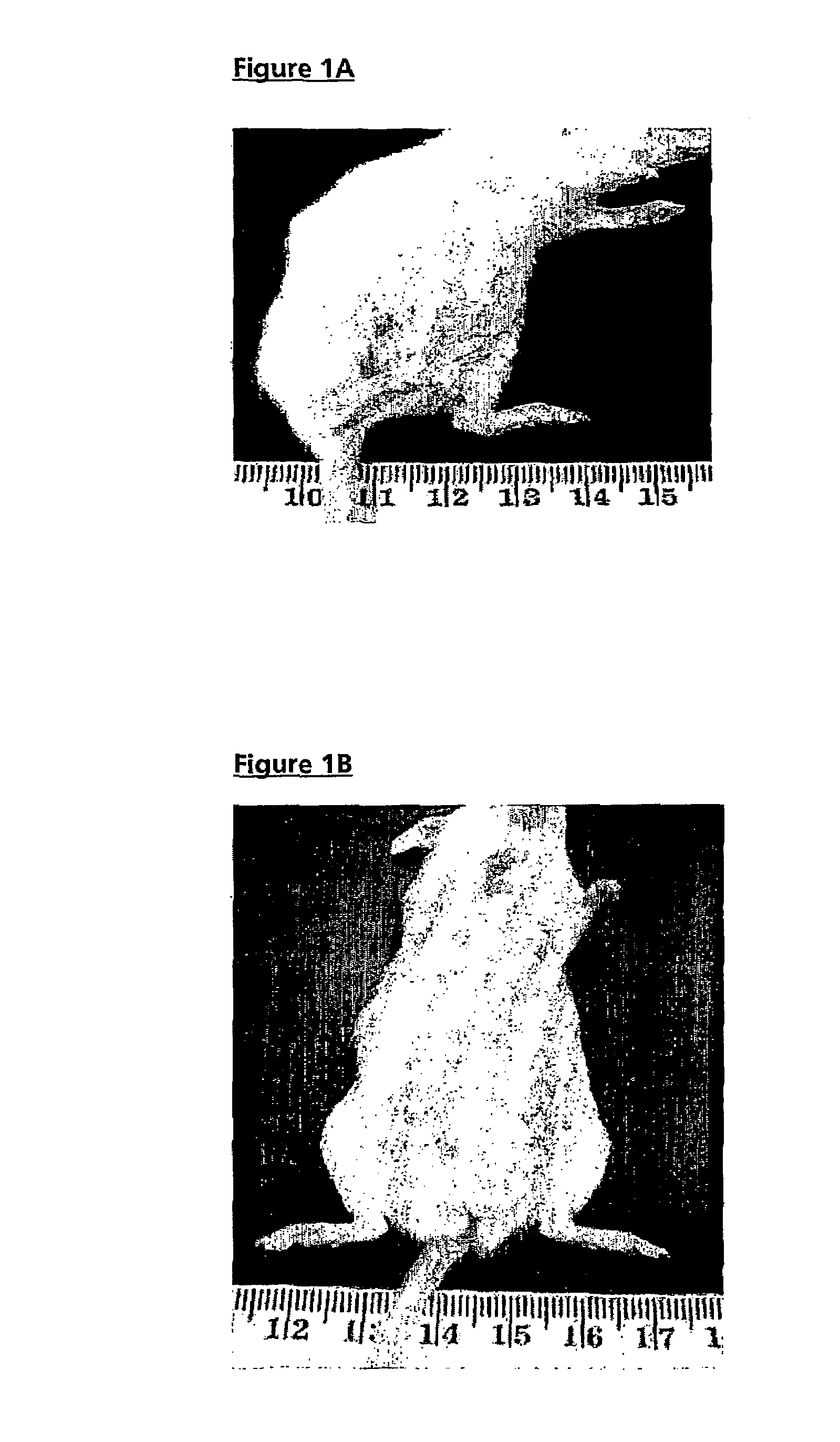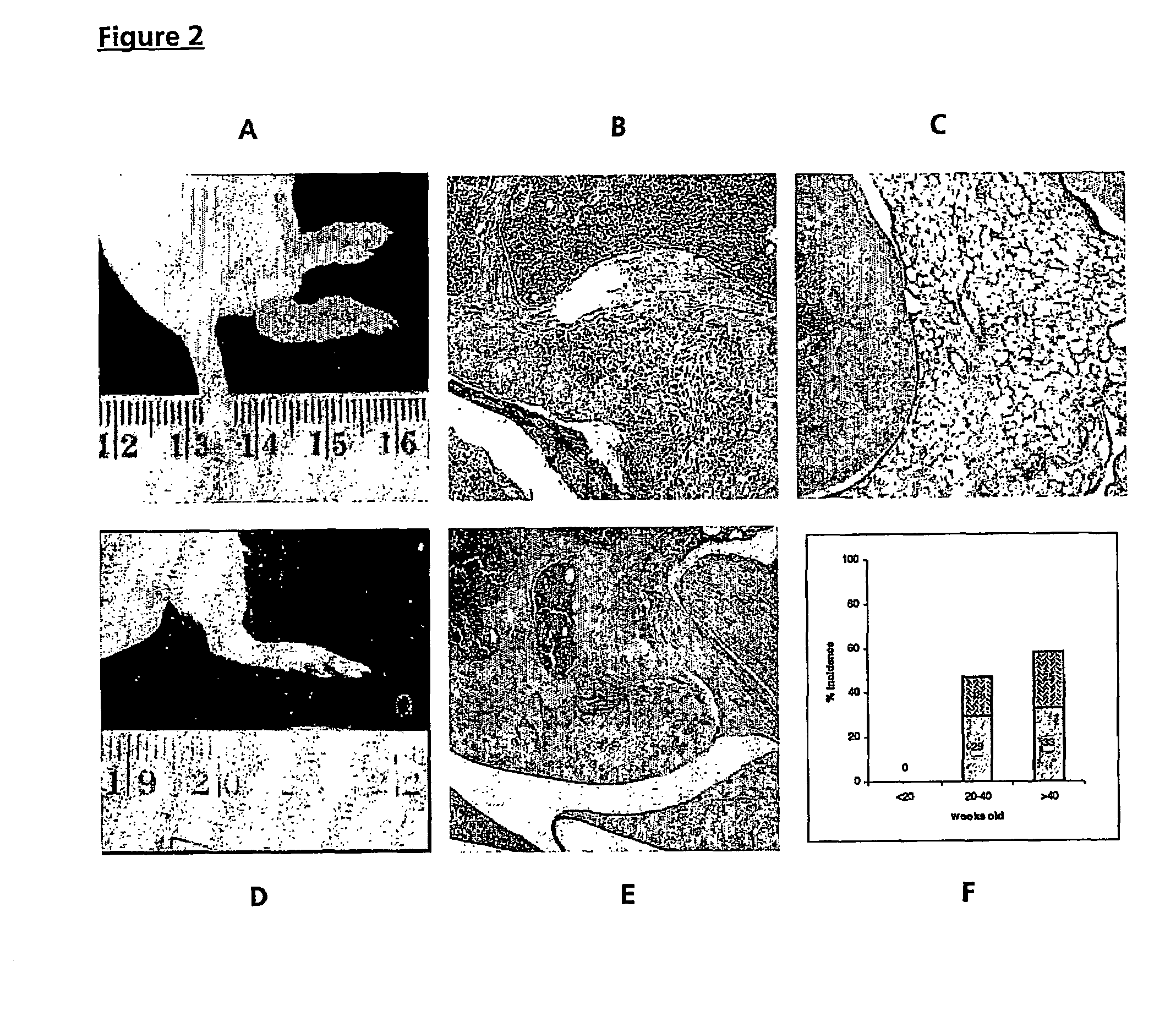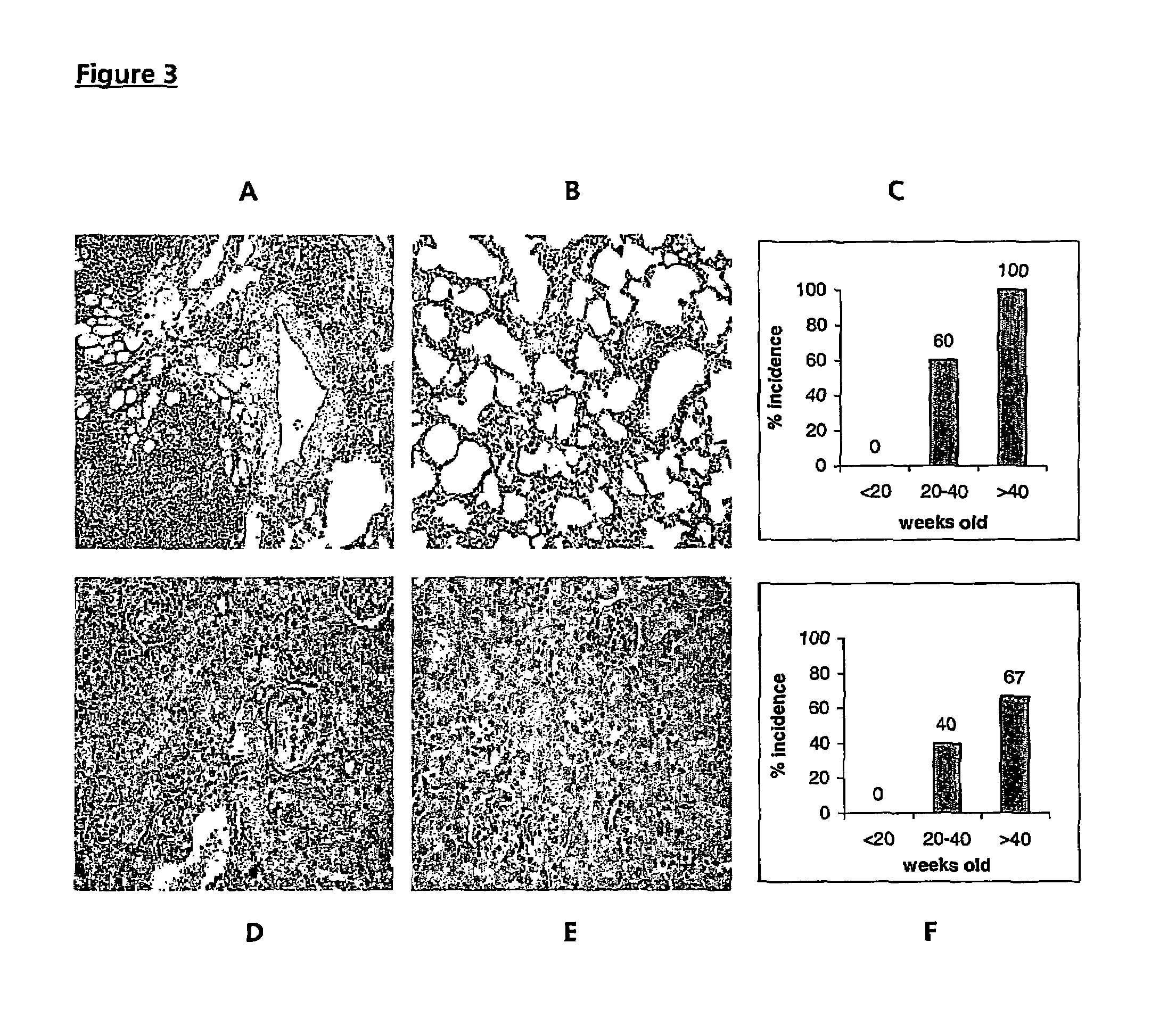FcγRIIa transgenic animal model for autoimmune disease
a transgenic animal and autoimmune disease technology, applied in animal husbandry, biochemistry apparatus and processes, pharmaceutical non-active ingredients, etc., can solve the problems that no studies have examined the role of fcr in autoimmune disease, and achieve the effects of reducing aberrant immune complex formation, and reducing aberrant immune activity
- Summary
- Abstract
- Description
- Claims
- Application Information
AI Technical Summary
Benefits of technology
Problems solved by technology
Method used
Image
Examples
example 1
Methods for Using a Transgenic Mouse Model for Autoimmune Disease
(a) Transgenic Mice Expressing Human IgG Receptor FcγRIIa.
[0089]In transgenic mouse models of the present invention the following mice strains were used DBA / 1 (H-2q) males at 8-12 weeks old, C57BL / 6 (H-2b) and (C57BL / 6×SJ (H-2b / s) males or females at 8-15 weeks old, and transgenic mice expressing the FcγRIIa human transgene on platelets, neutrophils and macrophages at physiological levels, (as described in McKenzie et al. 1999). Transgenic males or females at 12-15 weeks old were used in collagen-induced arthritis (CIA) experiments, and >25 weeks old for the spontaneous autoimmune disease studies. All mice were bred and kept in clean conditions and were fed a standard diet and water ad libitum. The mouse is characterised in the published paper by McKenzie et al. 1999, listed in references.
(b) Collagen Type II Preparation.
[0090]Complete Freund's Adjuvant (CFA) was prepared by mixing 100 mg heat-killed M tuberculosis H37...
example 2
Results from a Spontaneous Arthritis (SA) Mouse Model
[0098]Spontaneous arthritis was observed in 47% of FcγRIIa transgenic mice at >20 weeks of age, increasing to 58% of mice aged >40 weeks and manifesting as swelling and reddening of the footpads and stiffening of the digits, knees and ankles (FIG. 1A, compared with aged matched control, FIG. 1B). Histological examination of the limbs confirmed the diagnosis of arthritis, shown in FIGS. 2B and 2C (compared with normal limbs from age matched non-transgenic mice (FIG. 2E)) revealed inflammation with synovium hyperplasia and infiltration by polymorphonuclear cells. In most of the cases with spontaneous arthritis, pannus formation and cartilage destruction were seen, with inflammatory infiltration of the cartilage (FIG. 2B). However, in about one third of mice with the spontaneous arthritis, histology showed sub acute synovitis, less inflammatory cells and no pannus formation (FIG. 2C). FIG. 2F shows the % cumulative incidence of spont...
example 3
Assessment of Systemic Lupus Erythematosus (SLE)
[0102]Systemic Lupus Erythematosus (SLE) is an autoimmune disease characterised by the development of antinuclear antibodies (ANA), especially against DNA. Antibodies to red and white blood cell surface antigens also develop, leading to anemia, thrombocytopenia, leukopenia, endothelial cell damage and vasculitis. Nerve damage is also seen. Renal failure and ultimately multiple organ failure are the end result. Many of these symptoms were seen in the aging FcγRIIa mice in that they also develop glomerulonephritis, pneumonitis and anti-nuclear antibodies. No mice were positive for rheumatoid factor. Detection of anti-nuclear antibodies which are symptoms of SLE were assessed in the following manner. High titres of anti-nuclear antibody were seen in 83% of the sera from transgenic mice aged >20 weeks, staining the cell nucleus with the “homogenous nuclear pattern”. The same pattern was observed with an anti-histone antibody (huPIA3) (FIGS...
PUM
| Property | Measurement | Unit |
|---|---|---|
| volume | aaaaa | aaaaa |
| temperature | aaaaa | aaaaa |
| pH | aaaaa | aaaaa |
Abstract
Description
Claims
Application Information
 Login to View More
Login to View More - R&D
- Intellectual Property
- Life Sciences
- Materials
- Tech Scout
- Unparalleled Data Quality
- Higher Quality Content
- 60% Fewer Hallucinations
Browse by: Latest US Patents, China's latest patents, Technical Efficacy Thesaurus, Application Domain, Technology Topic, Popular Technical Reports.
© 2025 PatSnap. All rights reserved.Legal|Privacy policy|Modern Slavery Act Transparency Statement|Sitemap|About US| Contact US: help@patsnap.com



